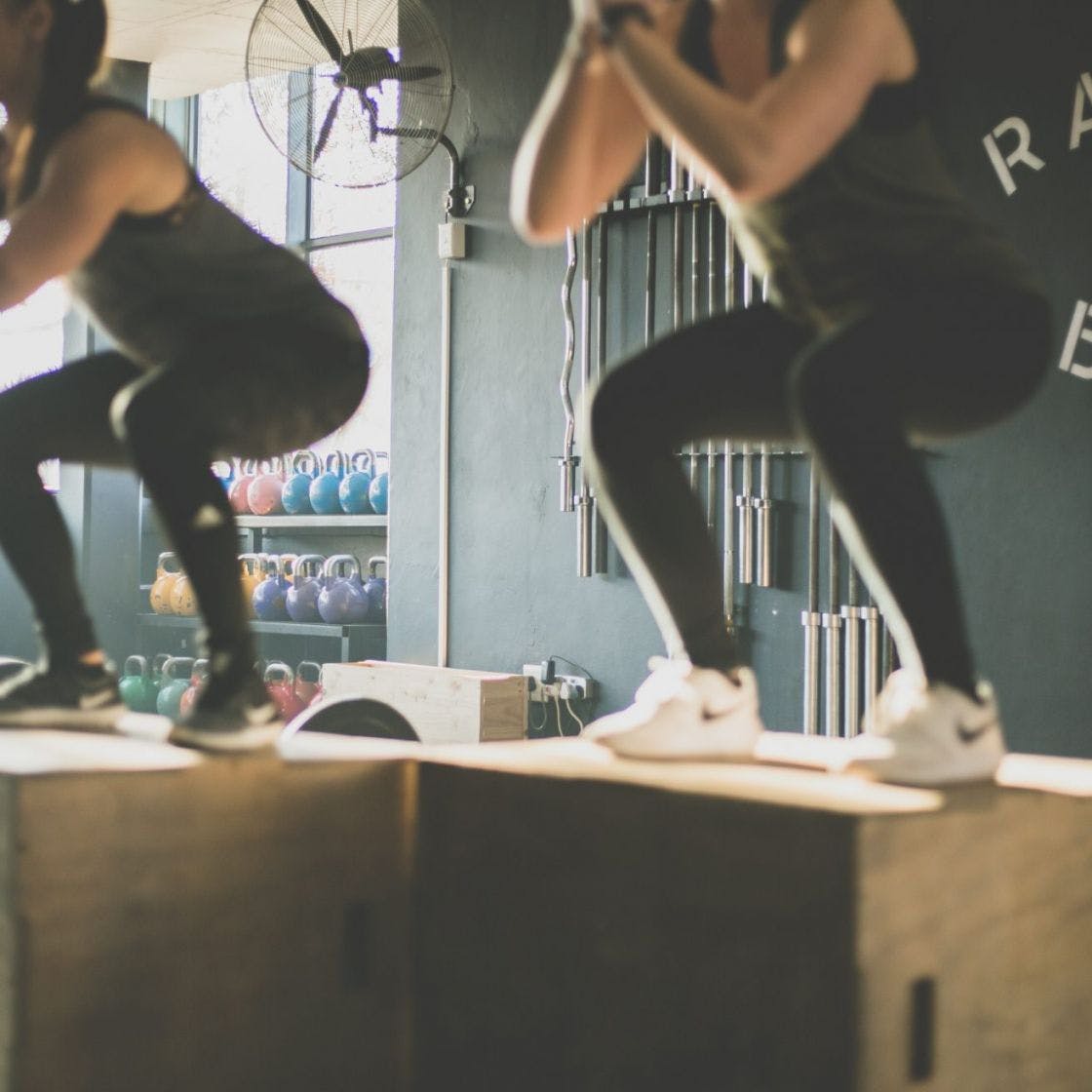Post-run knee pain is more common than you’d think — here’s how to treat those sore knees before your next run.
Deep in lockdown, fuelled by the constant sight of Strava screenshots on Instagram stories, I decided to go for a run. I regretted it: after my housemate dragged me around the park for two light 5ks, I could barely move from my bed to my desk for knee pain.
You may also like
Running: is running really bad for your back?
It turned out, I wasn’t alone. Behind all of those bragging posts about new PBs, everyone else’s knees were quivering too. My flatmate moaned about it, my friends quietly confessed to it and my colleagues messaged me, the fitness writer, for advice about it.
It seems runner’s knee is undeniably a very real complaint. What’s worse, it turns out women tend to be more susceptible to knee problems, with female athletes up to two times more likely to have an ACL injury than men.
Lyndsay Hirst, physiotherapist at Your Pilates Physio, to explain why we’re all suffering with knee pain now that the pandemic has made runners of us all.
WHY DO MY KNEES HURT AFTER RUNNING?
The cause of your pain depends on where it is, says Lyndsay Hirst, physiotherapist at Your Pilates Physio. “If you’re suffering with bilateral pain, meaning both knees are suffering, the usual culprit for that is weakness in the quad muscles,” she explains.
But things get more complicated when it’s one knee that’s taking more of the strain: “That’s more likely to be a biomechanical issue. With the knee being between the ankle and the hip, it’s hugely influenced by both of those joints.”

This explains a lot for me. At the beginning of lockdown, I had tendinitis in my right ankle so badly that I was on crutches. It was then my right knee that was feeling fiery after running, as my ankles couldn’t take the weight of the run.
But for many, it’s hip weaknesses that can cause knee pain: “99%, if not 100%, of my patients with knee problems after running have biomechanical problems with the hip,” Hirst says.
“What we’ll find is that they have weakness in their glute muscles, and in particular in their gluteus medius muscle. The glute meds job is to externally rotate the femur [thigh bone]. If the glute med is weak, then as you’re running the femur will internally rotate instead, causing an inward twisting of the knee.”
Interestingly, many people who complained to me about struggling with pain after running are people who regularly hit the gym. I’ve seen them hip thrust, squat and lunge – so how are they not strong enough to run?
“Resistance exercises don’t really mimic the action of the muscle during running,” Hirst says. “The firing patterns of the muscles are different to how you would train them on a leg press or hamstring curl machine. Even if it’s just a 5k, which might not sound like a huge amount, it’s something new to your body. You’re asking your muscles to perform a completely different activity to what they used to do.”
You may also like
Running: 6 ways to avoid injury now that we're running a lot more than usual
HOW DO I TREAT KNEE PAIN AFTER RUNNING?
Releasing tension in the muscles surrounding the knee, like the quads, hamstrings and calves is always a good place to start. “Discomfort or pain in the IT band [the outer thigh] can be caused by all of these muscle imbalances,” says Hirst.
“Foam rolling is a soft tissue release technique that can reduce the tension in the muscular structure, but I would never suggest doing that in isolation. You need to make sure you’re ironing out the muscle imbalance in the first place.”
So, how do we do that? Activating glutes before running, with clams, bridges and other waking-up moves will help you drive forwards without overstraining the knees. But general strength training is essential, too.
“Quad loading exercises like squats or single leg knee dips are great, but if it’s those glutes that need work then we really need to focus on form. For example, in those knee dips push the knee out over the toe in order to get the glute muscle functioning.” In addition, make sure your strength work is endurance focused, as that is the skill needed to transfer over to your running.

We also need to get our joints used to that impact, as well. That’s where Hirst recommends plyometric work, such as box jumps, to create the type of contraction that your muscle needs in order in order to survive the run.
Rest is also important. If you’re really suffering, take at least a week off from running, Hirst says, then gradually make your way back in by following a Couch to 5K programme, for example. “But do those strength training exercises daily,” she urges.
WHEN IS KNEE PAIN SERIOUS?
“You can get ligament damage or meniscal tears in the knees, but just from a pounding the streets, you wouldn’t usually get that sort of injury,” Hirst reassures. You’ll know the difference: proper damage will force you to stop running, rather than just ache a little, may swell and be hot and angry. If that’s you, contact a doctor or practitioner.
Follow @StrongWomenUK on Instagram for the latest workouts, delicious recipes and motivation from your favourite fitness experts.
Images: Getty / Unsplash
Source: Read Full Article